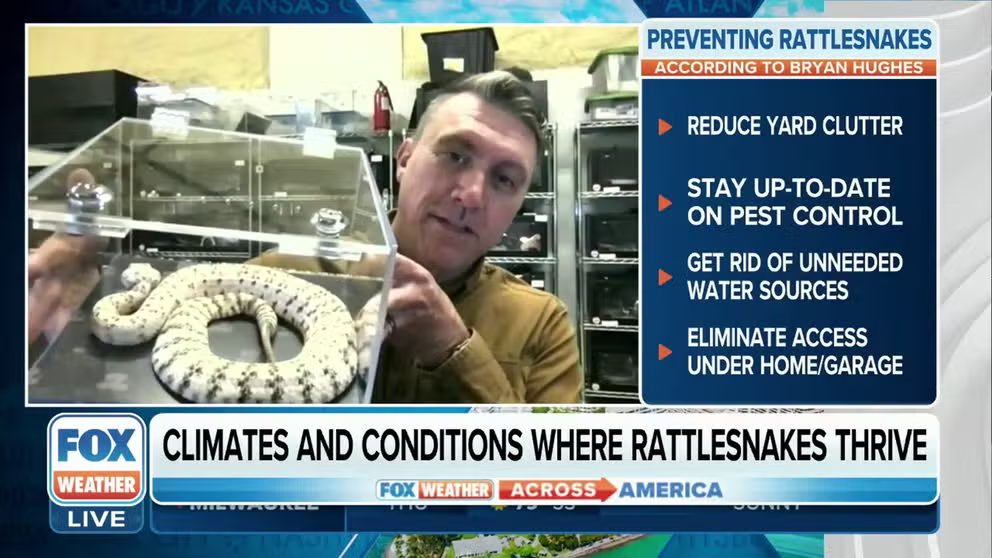Snakebites spike during hot weather, study says
A recent study found that warmer weather leads to more emergency room visits for snakebites.
Staying safe indoors and outdoors during rattlesnake season
Rattlesnake Solutions owner Bryan Hughes provides safety tips for rattlesnake season and explains what climates these venomous reptiles thrive in.
Heat waves not only make humans more irritable and aggressive, researchers recently found that venomous snakes are more active too.
A recent study out of Emory University found that for every rise of 0.8 degrees Fahrenheit of temperature in a day, snakebites increased by almost 6%. Venomous snakebite incidents rose by 5.6%, while non-venomous bites rose by 5.8%
"Snakes are ectotherms, meaning outdoor temperatures influence their internal body temperature and thus their behavior," authors of the study wrote of the coldblooded reptile.
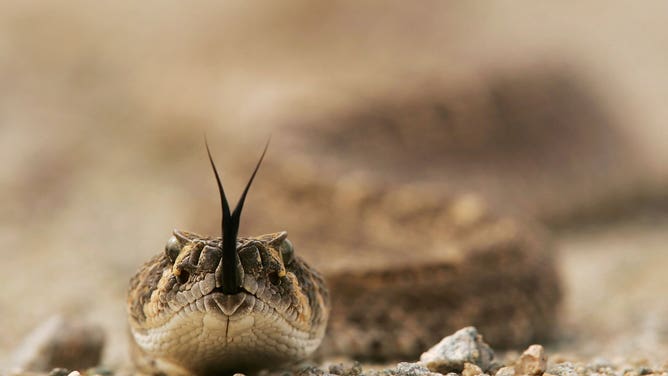
File: A rattlesnake in Arizona.
( David McNew / Getty Images)
Researchers studied Georgia weather and emergency room visits due to snake bites for seven years. Georgia and Kentucky lead the nation in snakebite deaths between 1989 and 2018, according to the American Poison Control Center.
During the study, emergency rooms treated 3,908 people for venomous snakebites and 1,124 for non-venomous bites. The study also looked at the number of non-snake venomous bites and stings, like spiders and insects, of which there were 65,187.
"This effect size is larger than what we find for envenomation by non-snake species (e.g., spiders, scorpions etc.), suggesting that snake ecology plays an important role," the study stated.
SNAKES ON THE MOVE: MATING SEASON AND WARMER WEATHER MAKE SERPENTS FRISKY

File: A venomous copperhead.
( Smith Collection/Gado / Getty Images)
Conversely, the study found a reduced chance of a snakebite with lower overnight temperatures but with a one-day lag.
Most bites occurred in summer, but the strongest link to warmer temperatures and more snake bites happened in the spring and fall. Winter only accounted for 2% of the bites.
Study authors do point out that human and snake encounters are more likely during warmer weather when people are outside hiking, gardening etc.
A different study published in Science Advances showed that snakebites in Costa Rica were unusually high during the hot and cold phases of El Niño, the phenomenon occurring now.
IT'S OFFICIAL: WORLD ENTERS EL NINO CLIMATE PATTERN
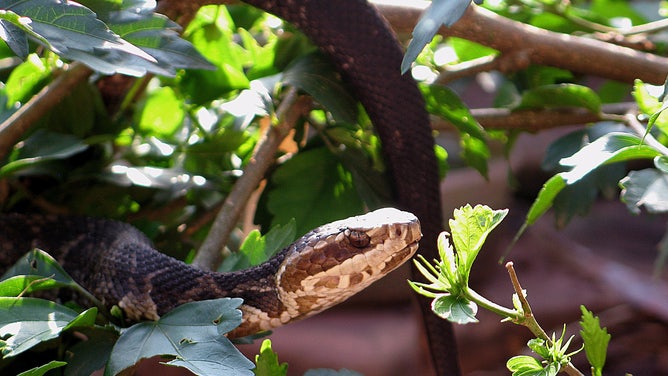
A venomous cottonmouth or water moccasin in Florida.
(Smith Collection/Gado / Getty Images)
"During the hot phase, the incidence of snakebites might rise as a result of increased snake activity at higher temperatures, whereas during the cold phase, snakebites might increase because of abrupt changes in the abundance of prey," wrote the authors. "During the cold phase, a reduction in seed productivity and its effects on prey availability can force snake movement into foraging areas, where they come into contact with humans."
Temperatures over 90-95 also cause snakes to overheat, according to the Texas Department of Parks and Wildlife. They will seek shade and even head indoors for it.
COLORADO BOY REMEMBERED AFTER DEADLY RATTLESNAKE BITE
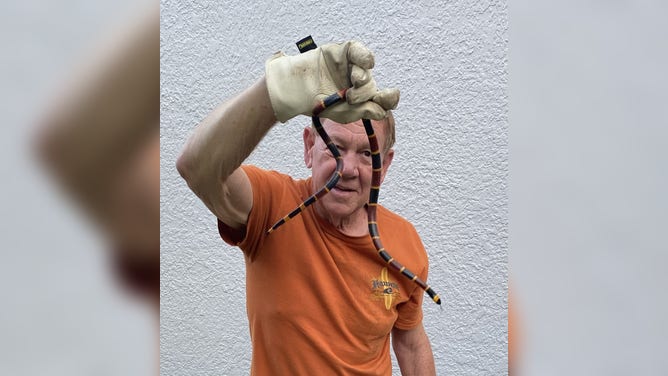
File: A snake removal expert removing a deadly coral snake from a Florida home.
(Critter Capture Services)
How often do snakebites happen?
Between 7,000 and 8,000 Americans a year are bitten by venomous snakes per year. About five will die, according to the Center for Disease Control. Thanks to antivenoms, death from envenomation is rare. But 10% to 44% of those bitten will have permanent injuries and disabilities like amputations and nerve damage.
More than 100,000 cats and dogs suffer venomous snake bites annually, according to the ASPCA. Up to 30% of the bites are fatal.
SAVING YOURSELF OR A PET'S LIFE FROM A SNAKEBITE
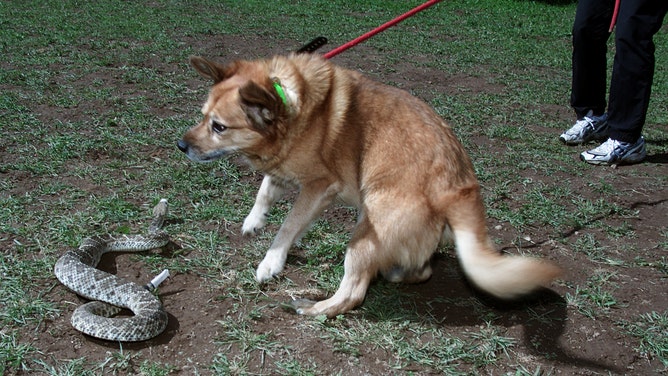
A dog going through rattlesnake avoidance training.
(Mel Melcon/Los Angeles Times via Getty Images / Getty Images)
Worldwide, the numbers are staggering, though. The World Health Organization estimates that about 5.4 million people are bitten by snakes every year, and 2.4 million are envenomated. Between 81,000 and 138,000 of those bitten die. About 243,000 to 414,000 need amputations and/or suffer permanent disabilities.
The WHO defined snakebites as the highest priority neglected tropical disease. The organization lists about 20 "conditions" mainly prevalent in tropical areas, which include rabies and leprosy, including snakebites.
"These diseases cause devastating health, social and economic consequences to more than one billion people," the WHO states on their site. "The epidemiology of NTDs is complex and often related to environmental conditions. Many of them are vector-borne, have animal reservoirs and are associated with complex life cycles. All these factors make their public-health control challenging."
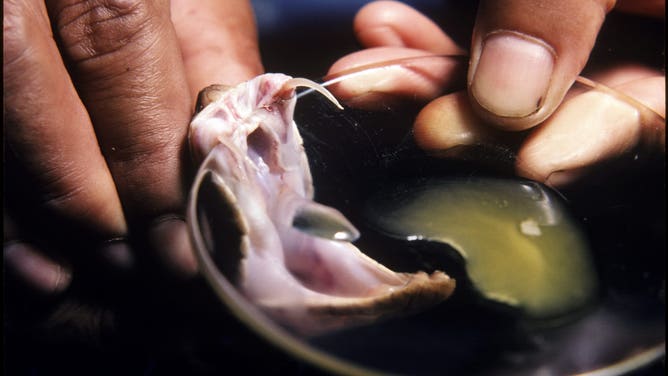
File: An official extracting venom from a cobra for antivenom at the Thai Red Cross.
(Alex Bowie / Getty Images)
What to do if a venomous snake bites you
If a venomous snake bites you, get to a hospital, experts say. KTVU FOX 2 interviewed rattlesnake expert Tyler Young after a boy was recently airlifted to a hospital after being bitten by a rattlesnake. The trip only took six minutes.
"Just get to the hospital as quick as possible. You don't want to tie off the limb or anything like that. It's a waste of time," said Young. "Ideally, if you're in the hospital within like an hour or so, in most cases you should be okay. It's not a fun time, but. But getting to the hospital is key. The more time you waste doing other strange methods of care before you get to the hospital is just again, a waste of time. And that time is money."
